Simple Sauerkraut Recipe You Can Make at Home
What is Sauerkraut? A Brief Overview
So, what exactly is sauerkraut? Simply put, it’s fermented cabbage. The fermentation process not only preserves the cabbage but also creates a delicious, sour flavor and a wealth of beneficial probiotics. Think of it as cabbage gone wild – in a good way! It’s a staple in many cuisines, especially German and Eastern European, and it’s been enjoyed for centuries. Why? Because it’s delicious, nutritious, and incredibly versatile. Plus, making your own at home gives you complete control over the ingredients and the flavor.
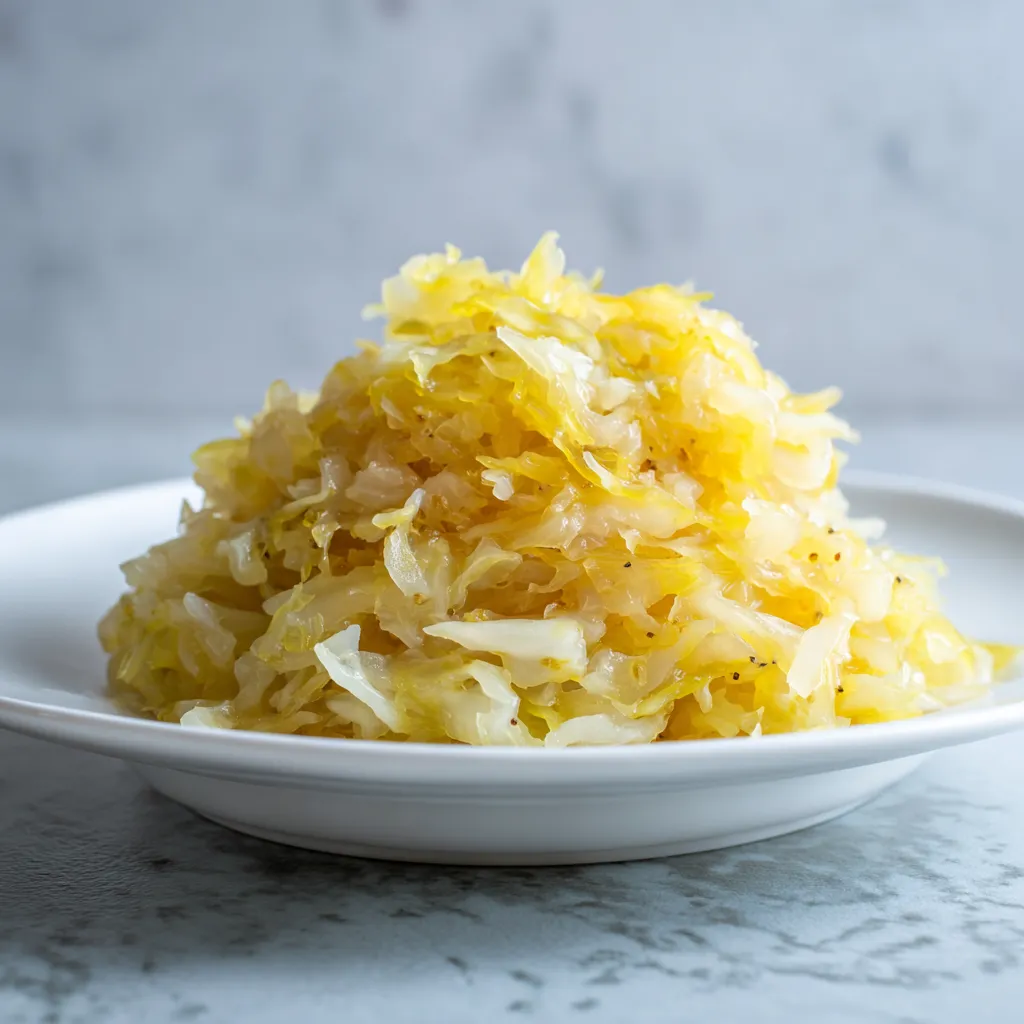
Ingredients You Will Need
Ready to dive in? Here’s what you’ll need to make your own batch of sauerkraut. Don’t worry, the list is short and sweet:
- 1 medium head of cabbage (about 2-3 pounds), green or red
- 2 tablespoons of sea salt (non-iodized)
- Optional: caraway seeds, juniper berries, or other spices to taste
That’s it! The beauty of this recipe is in its simplicity. The cabbage and salt work their magic together to create something truly special. The salt is crucial; it draws out the water from the cabbage, creating a brine that allows fermentation to occur. Avoid using iodized salt as it can inhibit the fermentation process. Feel free to play around with spices – caraway seeds are classic, but you can get creative with other flavors you enjoy.
Tools You’ll Need
Alright, here’s a quick rundown of the tools you’ll need to craft your sauerkraut masterpiece:
- Large knife or mandoline
- Large bowl
- Kitchen scale (optional, but recommended for precise salt measurement)
- Fermentation vessel (a glass jar, crock, or fermentation kit)
- Weight (a glass jar filled with water, fermentation weights, or a clean rock)
- Clean cloth or lid
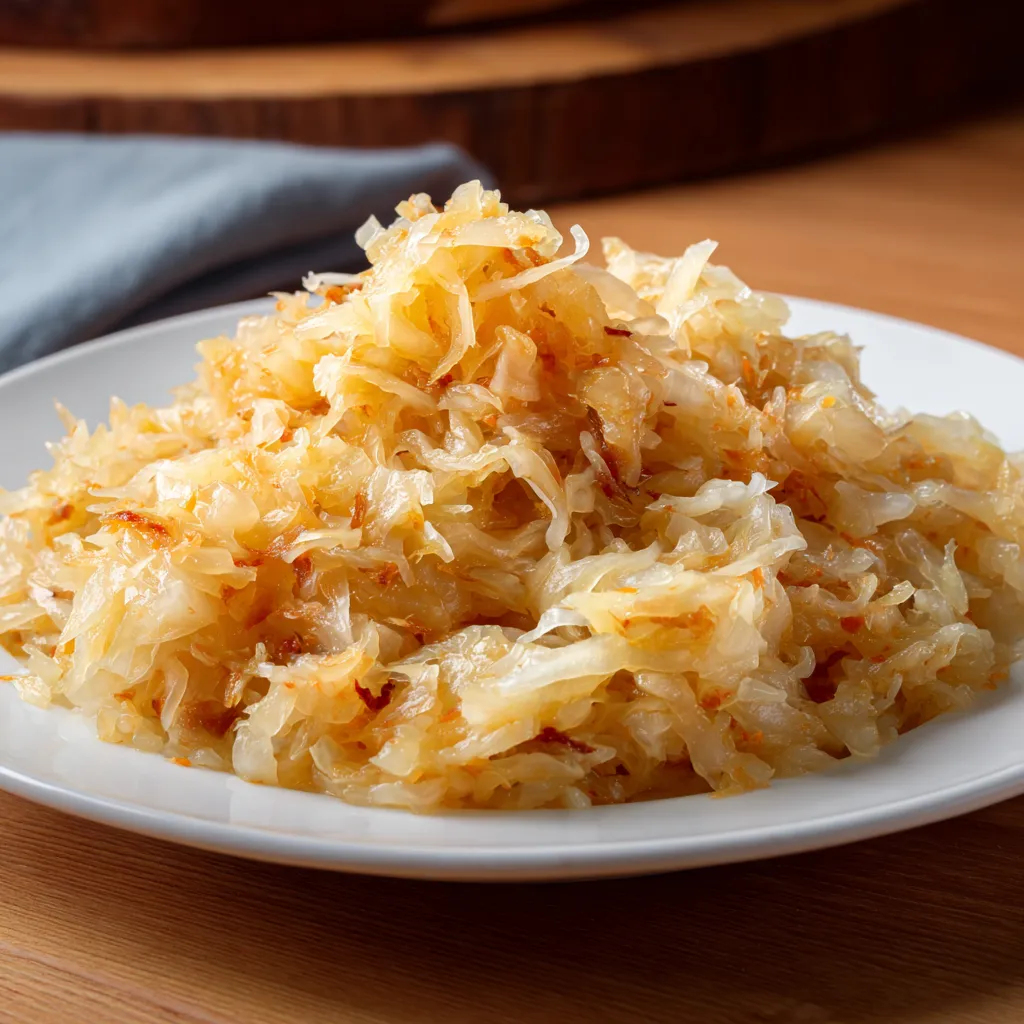
Step-by-Step Instructions: The Sauerkraut Symphony
Now for the fun part: turning a humble head of cabbage into tangy, delicious sauerkraut. Follow these steps carefully, and you’ll be enjoying your homemade kraut in no time.
Step 1: Prepare the Cabbage
Start by removing the outer leaves of the cabbage and discard them (or save them for another use). Cut the cabbage into quarters and remove the core. Using a large knife or mandoline, shred the cabbage thinly. The thinner the cabbage, the easier it will release its juices, which is what we want.
Step 2: Salt and Massage
Place the shredded cabbage in a large bowl. Sprinkle the sea salt over the cabbage. Now, here comes the satisfying part: massage the cabbage with your hands for about 5-10 minutes. Yes, really! This process helps break down the cell walls of the cabbage and release its juices. You’ll notice the cabbage starting to soften and become more translucent as you massage it. You should see a good amount of liquid pooling at the bottom of the bowl.
Step 3: Pack the Cabbage
Transfer the salted cabbage into your fermentation vessel. Pack it down firmly with your hands or a wooden spoon to release even more juices. The goal is to submerge the cabbage in its own brine. If you don’t have enough liquid to completely cover the cabbage, you can add a small amount of saltwater (1 teaspoon of salt per cup of water) until it’s submerged.
Step 4: Weigh it Down
Place a weight on top of the cabbage to keep it submerged in the brine. This is crucial for preventing mold growth and ensuring successful fermentation. A glass jar filled with water, fermentation weights, or even a clean rock wrapped in plastic wrap will do the trick.
Step 5: Ferment and Wait
Cover the fermentation vessel with a clean cloth or lid, but don’t seal it completely. You want to allow gases to escape during fermentation. Place the vessel in a cool, dark place (around 65-75°F) for 1-4 weeks. Check on it every few days to make sure the cabbage is still submerged and to release any excess gas buildup. You might see bubbles forming – that’s a good sign! It means the good bacteria are doing their job.
Step 6: Taste and Enjoy
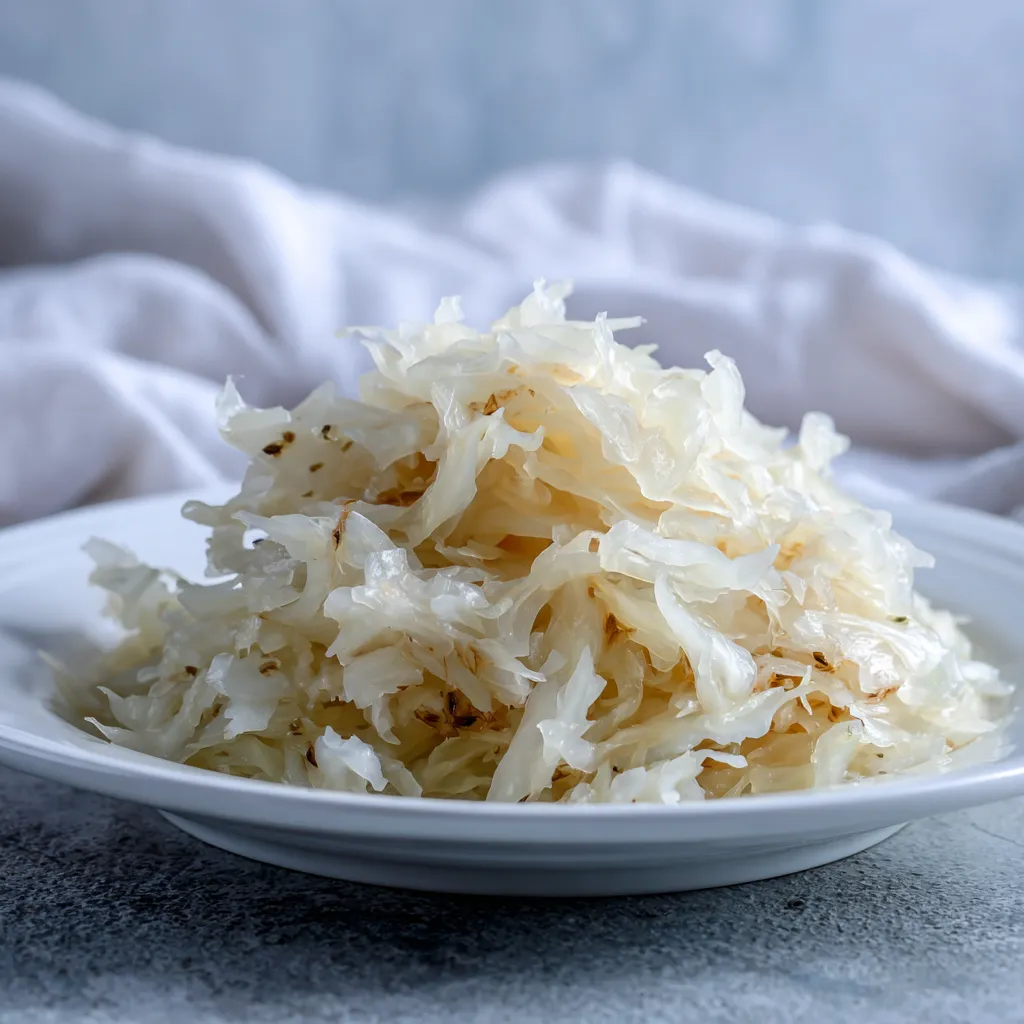
After 1-4 weeks, start tasting your sauerkraut. The longer it ferments, the more sour it will become. When it reaches your desired level of tanginess, transfer it to the refrigerator. Refrigeration slows down the fermentation process and keeps your sauerkraut fresh for several months.
Tips for Perfect Sauerkraut
Want to make sure your sauerkraut is a success? Here are a few extra tips to keep in mind:
- Use fresh, high-quality cabbage: The better the cabbage, the better the sauerkraut.
- Don’t skimp on the salt: Salt is essential for fermentation and preventing unwanted bacteria growth.
- Keep everything clean: Use clean utensils and a clean fermentation vessel to avoid contamination.
- Be patient: Fermentation takes time, so don’t rush the process.
- Trust your senses: If something looks or smells off, discard it.
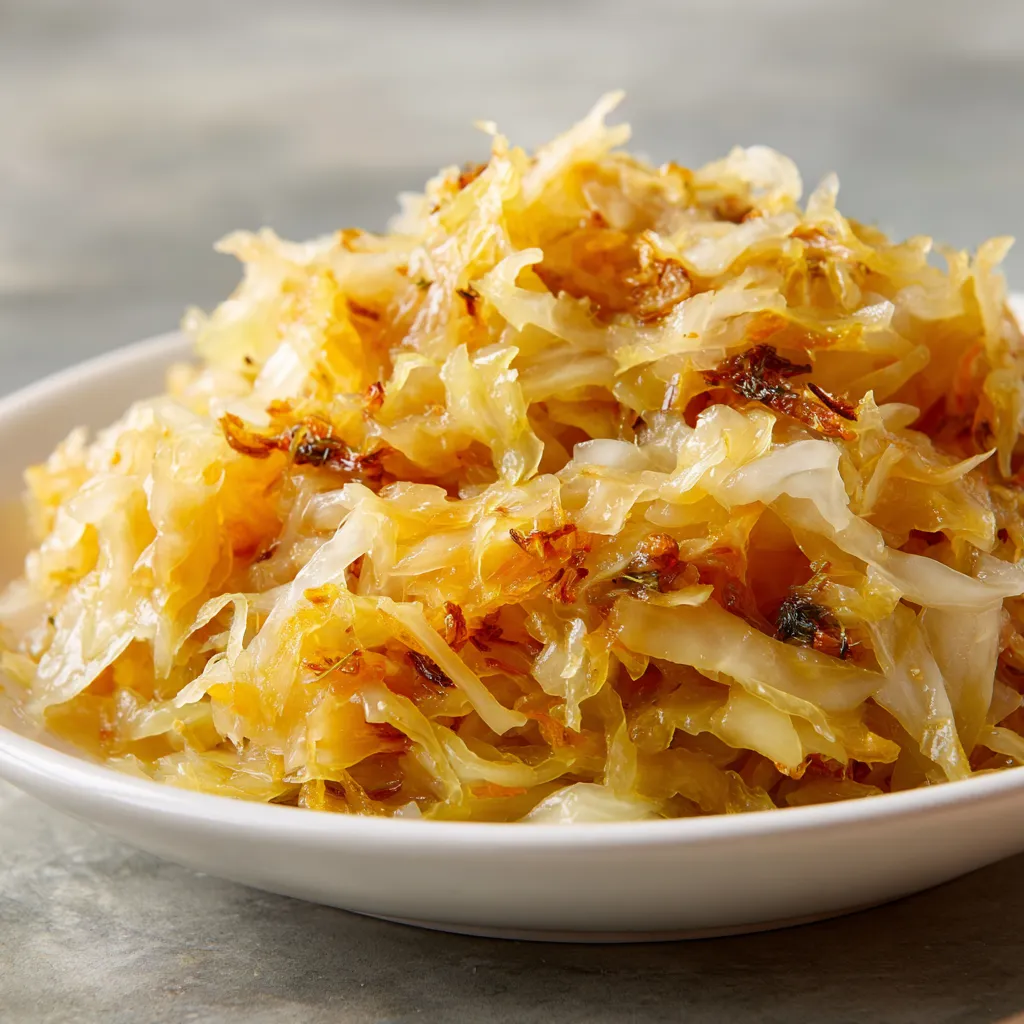
Serving Suggestions
Now that you have a jar of delicious, homemade sauerkraut, how do you eat it? The possibilities are endless! Here are a few ideas to get you started:
- On sandwiches: Add it to Reubens, pulled pork sandwiches, or even grilled cheese for a tangy twist.
- With sausages: Sauerkraut and sausages are a classic pairing.
- As a side dish: Serve it alongside roasted meats, mashed potatoes, or other hearty dishes.
- In salads: Add a spoonful to your favorite salad for a probiotic boost and a burst of flavor.
- In soups and stews: Stir it into soups and stews for added depth and tanginess.
Prep Time | Total Time | Kcal | Yield
- Prep Time: 20 minutes
- Total Time: 1-4 weeks (fermentation time)
- Kcal: Approximately 20 calories per serving
- Yield: About 1 quart of sauerkraut
So, there you have it! A simple, step-by-step guide to making your own delicious sauerkraut at home. It’s a fun, rewarding process that will give you a newfound appreciation for fermented foods. Now go forth and ferment!
FAQ: Your Sauerkraut Questions Answered
Why is my sauerkraut pink?
Pink sauerkraut can be caused by the presence of certain types of yeast or bacteria. While it might not look appealing, it’s usually harmless. If the sauerkraut smells and tastes normal, it’s likely safe to eat. However, if you’re unsure, it’s always best to err on the side of caution and discard it.
My sauerkraut is moldy. Is it safe to eat?
If you see mold growing on your sauerkraut, it’s best to discard the entire batch. Mold can produce toxins that are harmful to your health. It’s important to keep the cabbage submerged in the brine during fermentation to prevent mold growth.
How long does homemade sauerkraut last?
Homemade sauerkraut can last for several months in the refrigerator. The acidity of the fermented cabbage helps to preserve it. Make sure to store it in an airtight container to maintain its freshness.
Can I use different types of cabbage?
Yes, you can use different types of cabbage to make sauerkraut. Green cabbage is the most common choice, but you can also use red cabbage or even Napa cabbage. Keep in mind that different types of cabbage will have slightly different flavors and textures.
Is sauerkraut good for you?
Absolutely! Sauerkraut is a nutritional powerhouse. It’s rich in probiotics, which are beneficial bacteria that support gut health. It’s also a good source of vitamins C and K, as well as fiber. Eating sauerkraut can help boost your immune system, improve digestion, and even reduce inflammation.
Thank you for being here! I’m so glad you’re here. If you enjoyed this recipe or found it helpful, feel free to share it with your friends and family—great food is meant to be shared!
Don’t forget to follow me on Facebook and Instagram for more delicious recipes, kitchen tips, and daily cooking inspiration. Your support means the world to me, and I look forward to bringing you even more tasty ideas straight from my kitchen.
Print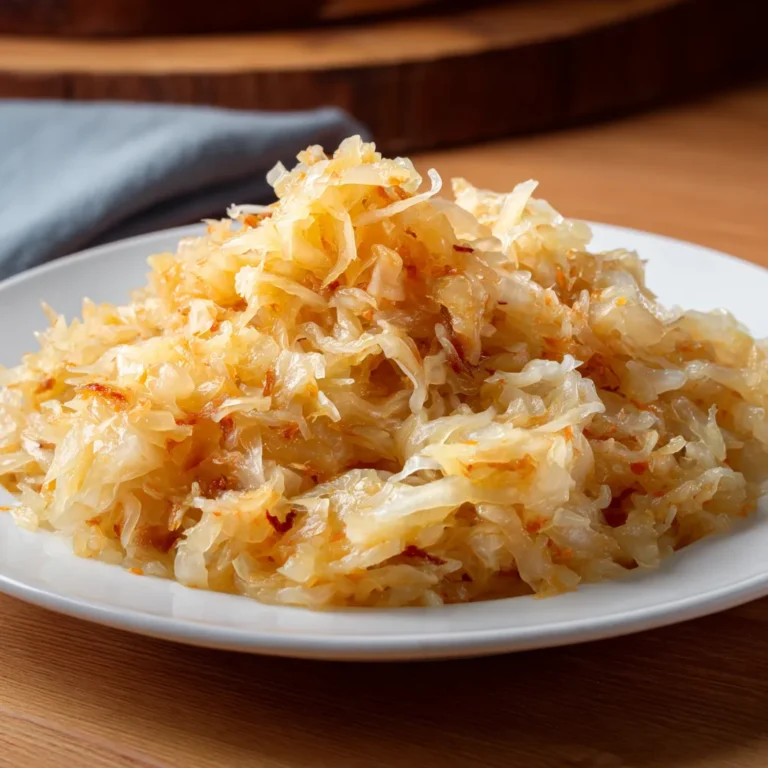
Easy Sauerkraut Recipe Delicious Homemade
Make delicious homemade sauerkraut easily This simple sauerkraut recipe requires minimal prep yields tangy results Learn the easy technique now
- Total Time: P7D
- Yield: 1 quart 1x
Ingredients
Instructions
- Prep Time: 20 minutes
- Cook Time: PT0M
- Category: Fermented Vegetable
- Cuisine: German
Nutrition
- Calories: 20 kcal
- Sugar: 1 g
- Fat: 0.1 g
- Carbohydrates: 4 g
- Fiber: 2 g
- Protein: 1 g
